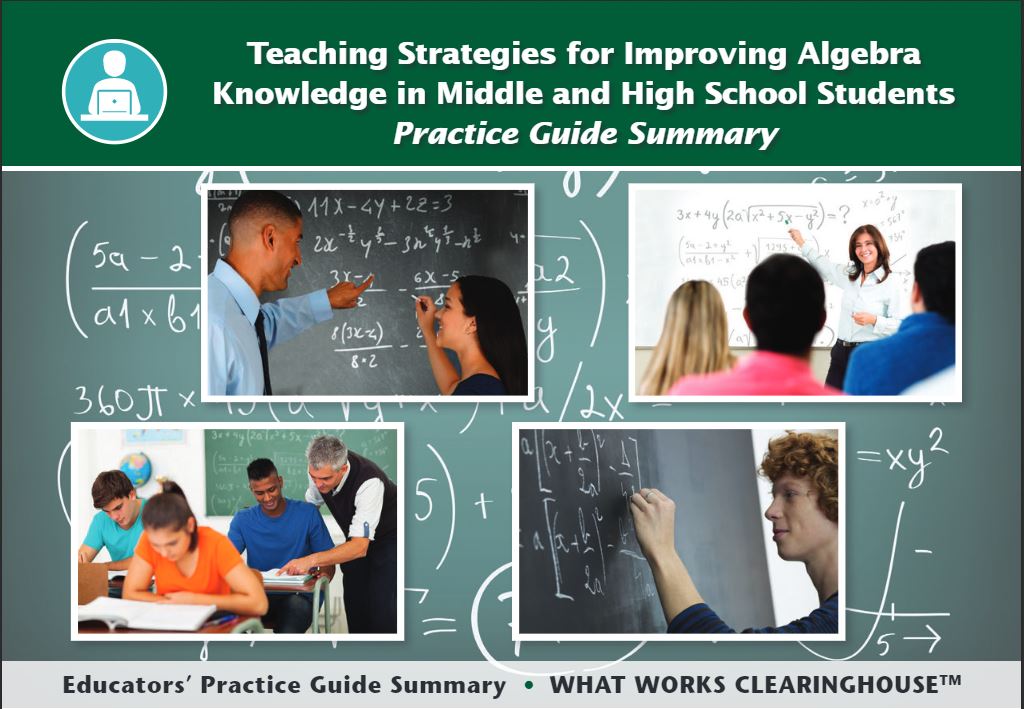By Diana McCallum, NCEE
With new education research released every day, it can be difficult to know which teaching methods and classroom practices have been tested and shown to improve student outcomes. You want to know what really works and how to use evidence-based practices in your school or classroom.
What Works Clearinghouse practice guides help bridge the gap between research and practice by examining the findings from existing research studies and combining them with expert advice about applying these findings in the classroom. For each guide, a team of nationally-recognized practitioners and researchers work closely with the WWC to combine evidence from research with guidance from hands-on experience.

Practice guides offer specific recommendations that include a description of the supporting research, steps for carrying out the recommendation, and strategies you can use to overcome potential challenges. Many of the guides also feature supplementary materials, like videos and summaries, to help you quickly find what you need.
One example is our most recent practice guide, Teaching Strategies for Improving Algebra Knowledge in Middle and High School Students. Mastering algebra helps students move from arithmetic operations to understanding abstract concepts, and is for a key to success in future mathematics courses, including geometry and calculus. Teaching Strategies for Improving Algebra Knowledge in Middle and High School Students presents three evidence-based recommendations educators can use to help students develop a deeper understanding of algebra, promote process-oriented thinking, and encourage precise communication. These recommendations help address common challenges in algebra instruction and focus on:
- Utilizing the structure of algebraic representations to make connections among problems, solution strategies, and representations;
- Incorporating solved problems into classroom instruction and activities to help students develop their algebraic reasoning skills; and
- Comparing and selecting from alternative algebraic strategies to give students flexibility when solving problems.
You can read the Practice Guide Summary for a quick overview of these recommendations or spend a few minutes watching videos in which Jon Star, of Harvard University’s Graduate School of Education, explain the recommendations.
The Teaching Strategies for Improving Algebra Knowledge in Middle and High School Students is just one of 19 practice guides available on the What Works Clearinghouse website. Some of the others are:

- Teaching Math to Young Children: Preschool and kindergarten teachers can get details on how to improve math lessons with this guide, including strategies to create a math-rich environment. You’ll find examples of classroom activities and games that can supplement lesson plans and provide opportunities for children to learn math.
You can find information and links to all 19 practice guides on our website. We also cover a variety of other math and literacy topics, as well as guides focused on dropout prevention, using data to monitor student progress and make decisions, and preparing students for college.
Visit whatworks.ed.gov to find the practice guide that’s right for you or to suggest a topic you’d like us to explore.
Dr. McCallum is an education research analyst on the What Works Clearinghouse team.
About the What Works Clearinghouse (WWC)
For more than a decade, the goal of the WWC has been to provide educators with the information they need to make evidence-based decisions with the aim of improving student outcomes. Established by the U.S. Department of Education’s Institute of Education Sciences, the WWC strives to be a central and trusted source of scientific evidence on education programs, products, practices, and policies. Follow us on Twitter and Facebook.